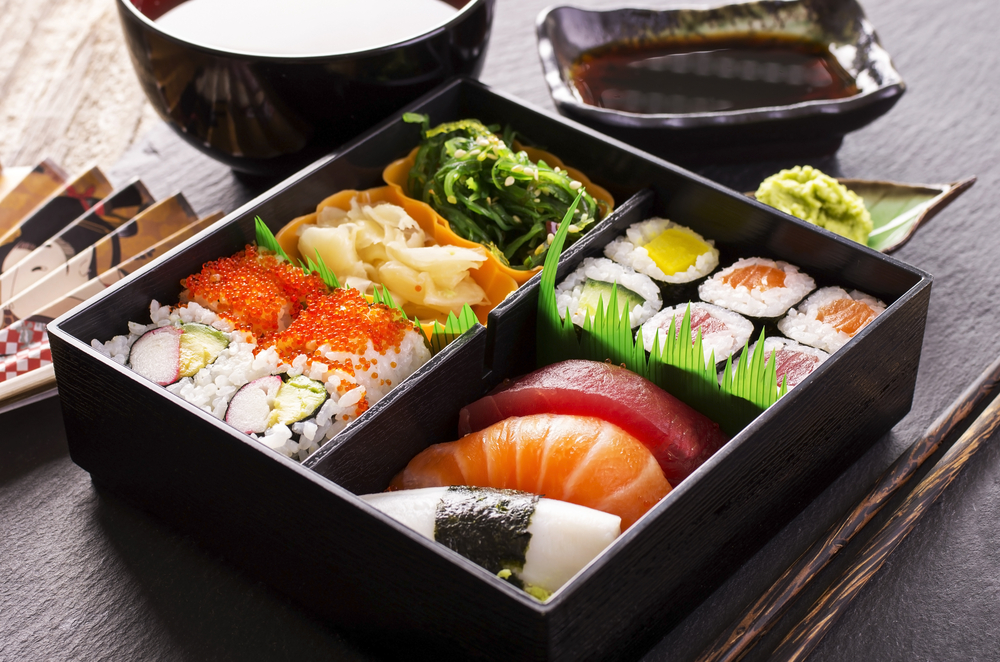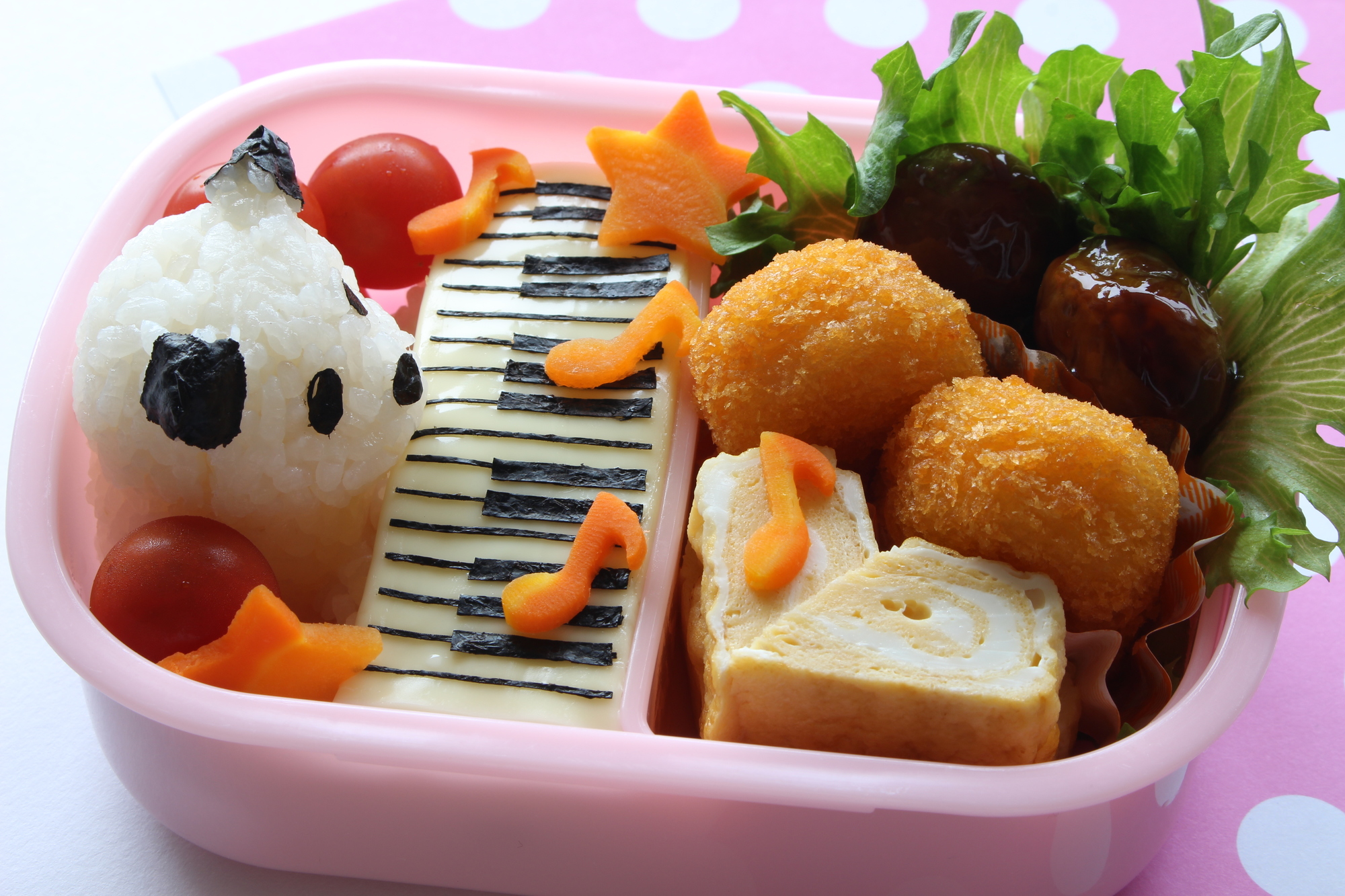Embark on a culinary journey via the world of bento field japanese meals, the place custom meets innovation in a pleasant dance of flavors and aesthetics. From its humble origins as a easy lunch container to its present standing as an elaborate murals, the bento field has developed right into a cultural icon, embodying the essence of Japanese delicacies and past.
On this complete information, we delve into the charming historical past, various sorts, and cultural significance of bento bins. Uncover the ideas of bento field composition, discover fashionable improvements, and study the etiquette related to this beloved culinary custom. Whether or not you are a seasoned bento fanatic or a curious newcomer, this exploration guarantees to tantalize your style buds and enrich your understanding of Japanese tradition.
Bento Field Origins and Historical past
Bento bins, a quintessential a part of Japanese delicacies, have a wealthy cultural significance and have developed from easy lunch containers to elaborate artworks. Their historical past is intertwined with the Japanese custom of making ready and consuming meals.
Early Origins
The earliest types of bento bins will be traced again to the Nara interval (710-794 CE) when wood bins known as “magewappa” had been used to pack meals for picnics and excursions. These bins had been typically adorned with lacquer and complex designs, reflecting the inventive sensibilities of the time.
Edo Interval Evolution
Throughout the Edo interval (1603-1868), bento bins grew to become extra elaborate and extensively used. The rise of the service provider class and the event of transportation programs led to an elevated demand for moveable meals. Artisans started to create bento bins in numerous styles and sizes, typically utilizing intricate strategies and supplies reminiscent of bamboo, lacquer, and ceramic.
Fashionable Bento Packing containers
Within the fashionable period, bento bins proceed to evolve, incorporating new supplies and designs. They’ve develop into a logo of Japanese tradition, each at house and overseas. Right now, bento bins are used for numerous events, from faculty lunches to picnics and at the same time as items.
Sorts of Bento Packing containers
Bento bins are available quite a lot of sizes, shapes, and supplies, every serving a particular objective and catering to completely different events and cuisines.
Dimension and Form
Bento bins fluctuate in dimension, from small, single-serving containers to bigger, multi-tiered bins that may accommodate a number of dishes. The form of the field may also fluctuate, with rectangular, sq., round, and oval designs being widespread.
Supplies
Bento bins are sometimes comprised of supplies reminiscent of lacquered wooden, plastic, stainless-steel, and bamboo. Lacquered wooden bins are conventional and provide a basic aesthetic, whereas plastic bins are light-weight and straightforward to scrub. Chrome steel bins are sturdy and might hold meals heat or chilly for longer intervals.
Bamboo bins are eco-friendly and supply a pure, rustic look.
Particular Sorts
Various kinds of bento bins are designed for particular events or cuisines:
- Ekiben:Bento bins bought at prepare stations in Japan, typically that includes regional specialties.
- Kyaraben:Bento bins adorned with characters or designs, typically made for youngsters.
- Makunouchi:A basic bento field with compartments for rice, fish, egg, and greens.
- Shokado:A multi-tiered bento field with compartments for various dishes, typically used for particular events.
Conventional Bento Field Contents

Conventional bento bins, generally known as makunouchi bento, are rigorously crafted to offer a balanced and visually interesting meal. The contents adhere to particular ideas and cultural customs, reflecting the Japanese emphasis on concord and aesthetics.
Composition Rules, Bento field japanese meals
Bento field composition follows three key ideas:
- Stability:The contents are organized to create a harmonious visible impact, with colours, shapes, and textures contrasting and complementing one another.
- Selection:A variety of substances and dishes are included to offer a various and nutritious meal.
- Presentation:The meals is rigorously organized to maximise its visible enchantment, with every aspect positioned with precision.
Widespread Components and Dishes
Conventional bento bins sometimes embrace the next:
- Rice:The bottom of most bento bins, offering a starchy basis.
- Protein:Grilled fish, fried rooster, or tofu present protein and a savory aspect.
- Greens:Pickled greens, boiled greens, or stir-fried greens add colour, texture, and vitamins.
- Egg:A tough-boiled egg or omelet provides protein and a pop of colour.
- Fruits:Seasonal fruits present a candy and refreshing distinction.
Cultural Significance
Particular substances and their placement throughout the bento field maintain cultural significance:
- Rice:The bottom of the bento field represents the muse of the Japanese weight loss program.
- Protein:The location of the protein aspect on the left facet symbolizes the solar.
- Greens:Organized on the fitting facet, greens signify the moon.
Bento Field Etiquette

Bento bins carry a wealthy custom of etiquette that displays the cultural significance of meals in Japanese society. Understanding and adhering to those customs ensures a respectful and fulfilling expertise.
Preparation and Presentation
- Cleanliness:Bento bins and utensils ought to be meticulously cleaned earlier than use.
- Aesthetic Attraction:The presentation of the bento field is taken into account an artwork type. Organize meals gadgets with care to create a visually pleasing composition.
- Stability:Purpose for a balanced mixture of flavors, textures, and colours to reinforce the general eating expertise.
Consumption
- Use Correct Utensils:Chopsticks or a fork are sometimes used for consuming bento field contents.
- Get pleasure from Mindfully:Savor every chunk and respect the flavors and textures of the meals.
- Respect the Meals:Keep away from losing meals or discarding it carelessly. If doable, end the contents of the bento field.
Sharing and Social Customs
Bento field sharing is a standard follow in Japan, symbolizing friendship and communal eating. When sharing, provide the field to others and encourage them to take as a lot as they like.
- Be Well mannered:When receiving a shared bento field, categorical gratitude and respect the one who ready it.
- Contemplate Dietary Restrictions:Be conscious of any dietary restrictions when sharing a bento field.
- Provide Selection:If doable, embrace quite a lot of meals gadgets within the bento field to cater to completely different preferences.
Well being and Diet in Bento Packing containers: Bento Field Japanese Meals
Bento bins provide a handy and customizable strategy to pack nutritious meals. They supply a balanced and assorted weight loss program, selling wholesome consuming habits. The compact design encourages portion management, stopping overeating.
To create a balanced bento field, take into account incorporating the next:
Carbohydrates
- Brown rice, quinoa, whole-wheat bread
- Starchy greens like potatoes, corn, peas
Protein
- Lean meats like rooster, fish, tofu
- Eggs, beans, lentils
Fruits and Greens
- Contemporary fruits like berries, bananas, apples
- Uncooked or cooked greens like carrots, broccoli, spinach
Wholesome Fat
- Nuts, seeds, avocado
- Olive oil, fatty fish
By incorporating quite a lot of meals teams in applicable portion sizes, bento bins can present a whole and nutritious meal.
Cultural Significance of Bento Packing containers

Past their culinary significance, bento bins maintain a profound cultural significance in Japan. They signify not solely a handy strategy to transport and revel in meals but additionally function symbols of Japanese id and custom.
Bento bins have been depicted in Japanese artwork for hundreds of years, from historical scrolls to modern work. They’re typically used as symbols of house, household, and the passing of time. In literature, bento bins play a major function in tales about journey, nostalgia, and the complexities of Japanese society.
Function in Common Tradition
In standard tradition, bento bins have develop into iconic symbols of Japan. They’re featured in anime, manga, and video video games, and are sometimes used to signify the nation’s distinctive meals tradition. Bento bins are additionally standard souvenirs for vacationers, and many individuals acquire them as a strategy to protect their reminiscences of Japan.
The cultural significance of bento bins is simple. They’re extra than simply containers for meals; they’re symbols of Japanese id, custom, and the nation’s wealthy meals tradition.
Detailed FAQs
What’s the cultural significance of bento bins in Japan?
Bento bins maintain deep cultural significance in Japan, representing a fusion of culinary custom, inventive expression, and social etiquette. They embody the Japanese values of stability, concord, and a focus to element.
What are the several types of bento bins?
Bento bins are available quite a lot of sizes, shapes, and supplies, every with its personal distinctive objective. Widespread sorts embrace the normal lacquered wood field, the fashionable plastic or stainless-steel field, and the compartmentalized field with detachable dividers.
What are the ideas of bento field composition?
Bento field composition follows sure ideas to make sure stability, selection, and visible enchantment. This features a harmonious association of colours, textures, and flavors, in addition to the cautious placement of substances to create an aesthetically pleasing presentation.
How can I create a wholesome and balanced bento field?
To create a wholesome and balanced bento field, embrace quite a lot of meals teams, reminiscent of carbohydrates, proteins, greens, and fruits. Take note of portion sizes and go for entire, unprocessed meals at any time when doable.
What’s the etiquette related to bento bins?
Bento field etiquette includes respectful preparation, presentation, and consumption. This contains utilizing clear utensils, avoiding sharing meals with others until supplied, and disposing of the field and packaging correctly.

